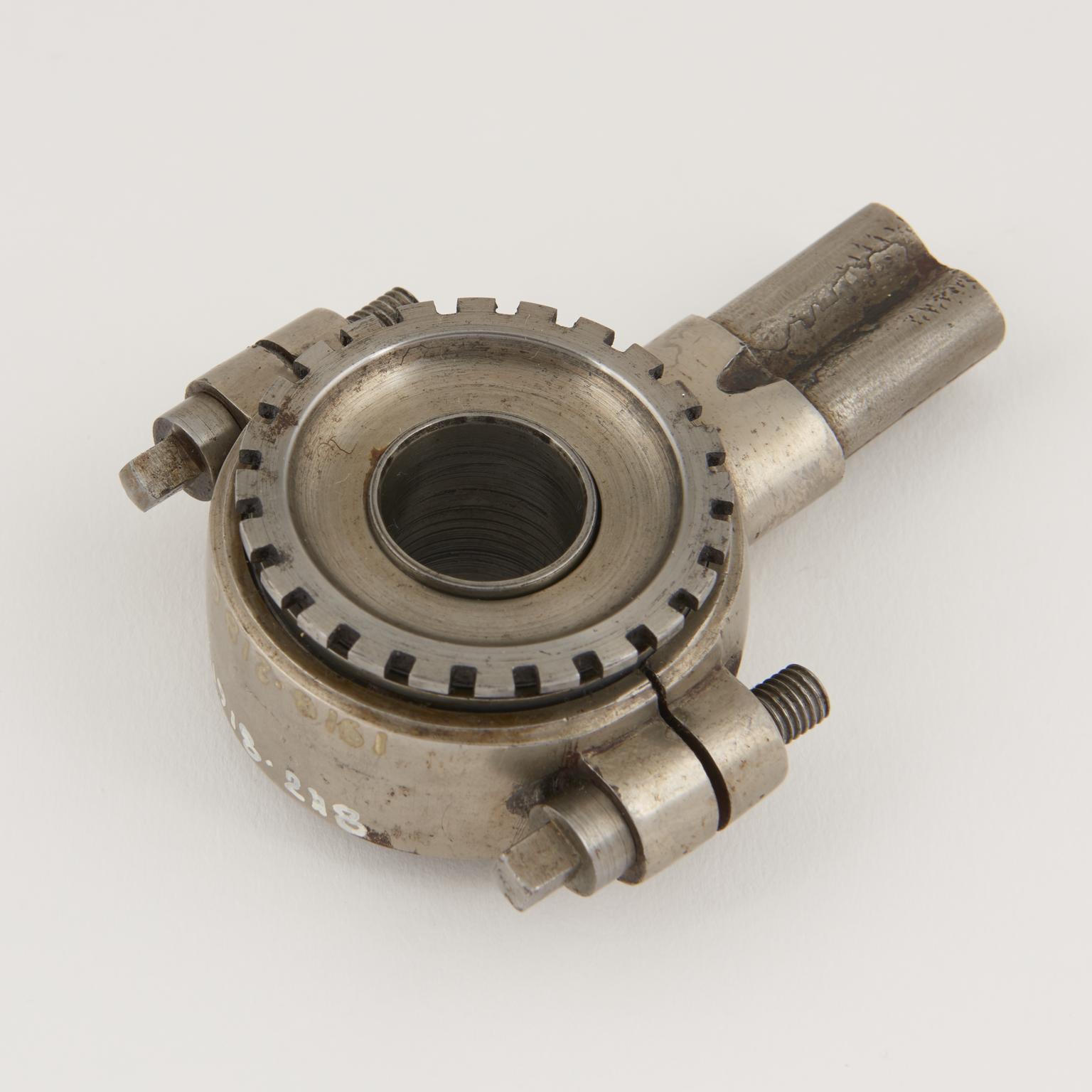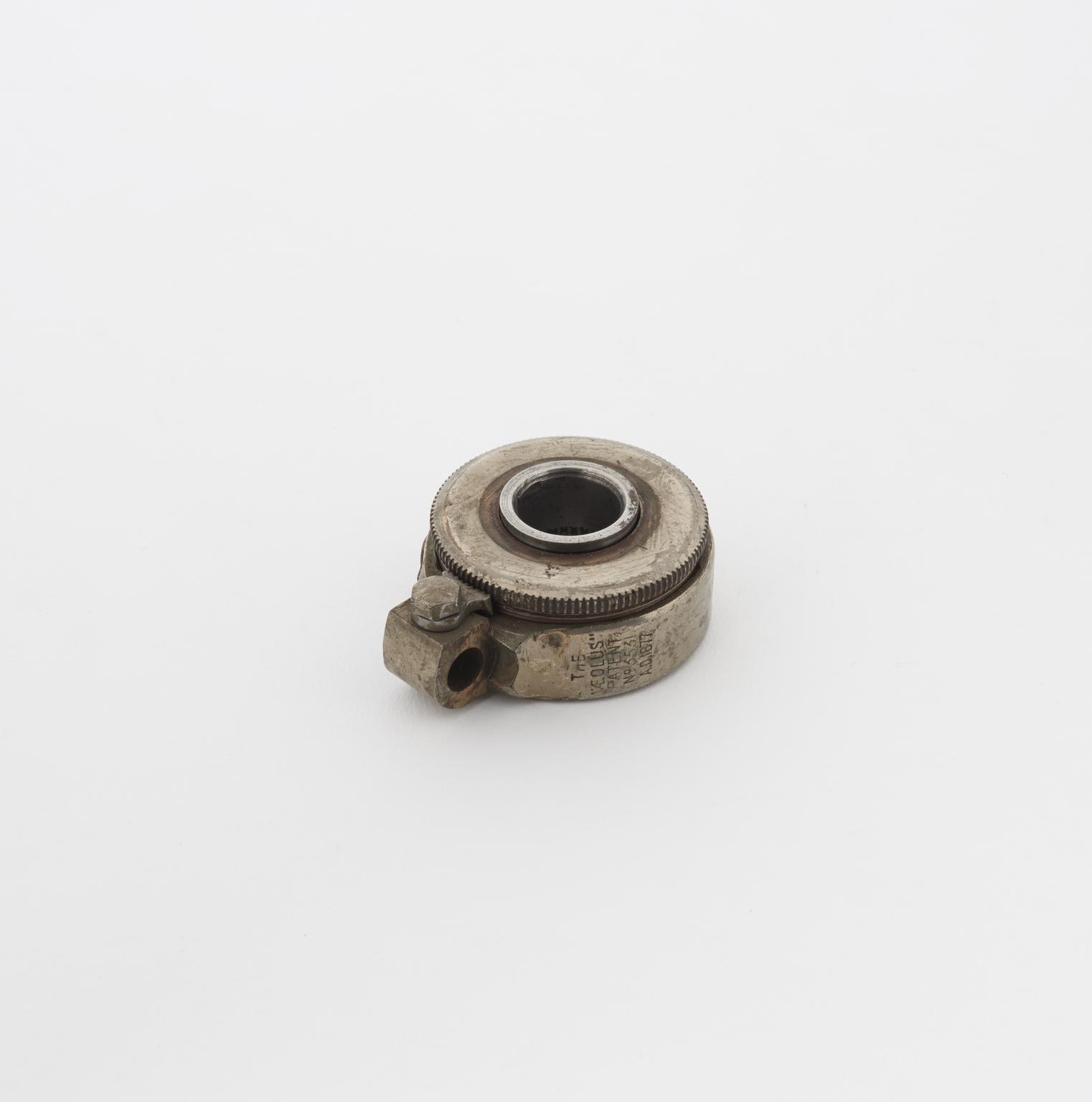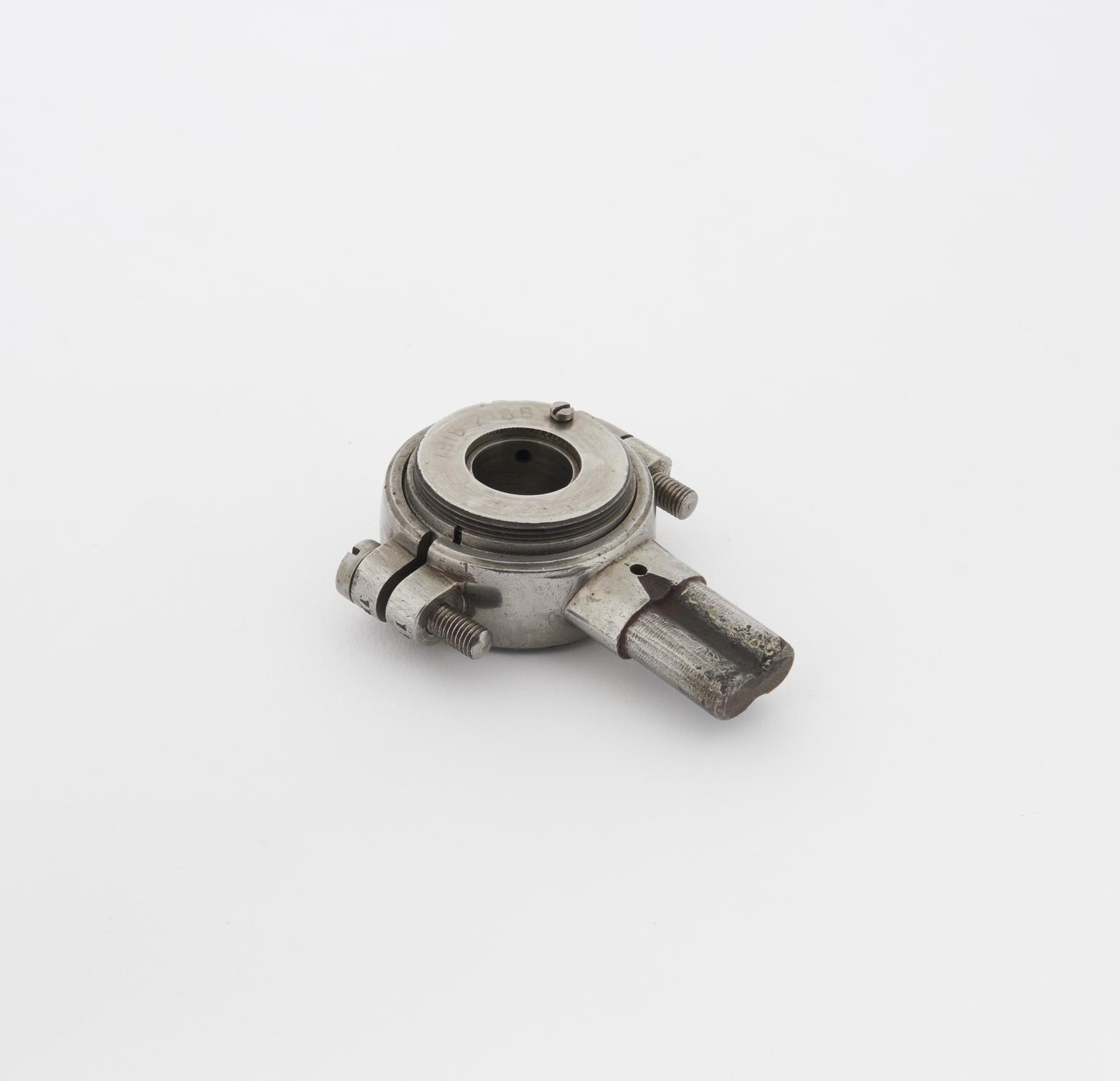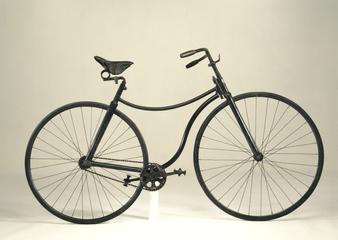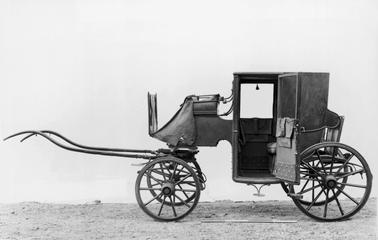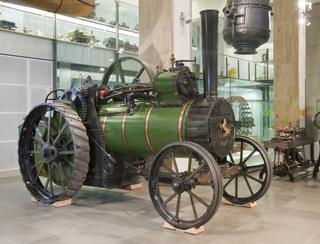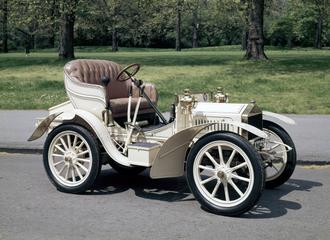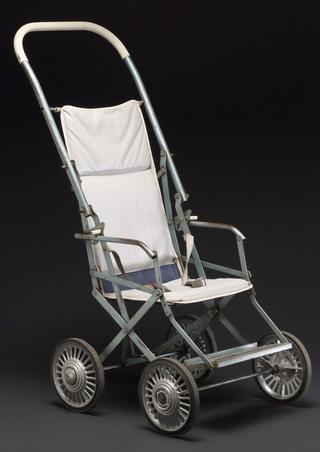Bicycle ball bearing
Aeolus ball bearing, 1877
More
This complete bearing was designed for the bicycle that was becoming popular about this time. The upper part has an arm which was for braising into the front forks whilst the cap at the other end is fixed by two screws. The casing is bored spherically and the inner bush is also turned spherically on its outside so that the bearing self aligning. This split bush is bored and threaded internally so that two hardened steel cones, facing one another, are screwed into it from either end. one cup is fixed by a set screw in the bush , while the other is fitted with a castellated rim for easy adjustment. A spigot which enters a hole in the bush limits the relative motion and also serves as a oiling hole. The axle passes through a 3/4" hole in a hardened steel sleeve having a central flange that forms a double sided conical ball race. Each race contains thirteen 0.25" balls without cages. Both the ball bearings are simultaneously adjusted by screwing up the moveable cup. When the set screws joinung both halfs of the outer casing are tightened both the self aligning spheres and the adjustable cups are locked. The balls have two points of contact and support both radial and thrust loads.
- Object Number:
- 1918-218/1
- type:
- ball bearing
